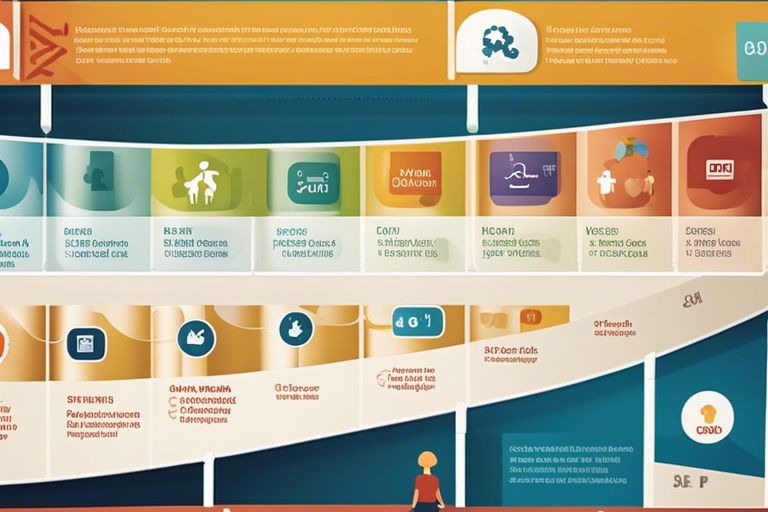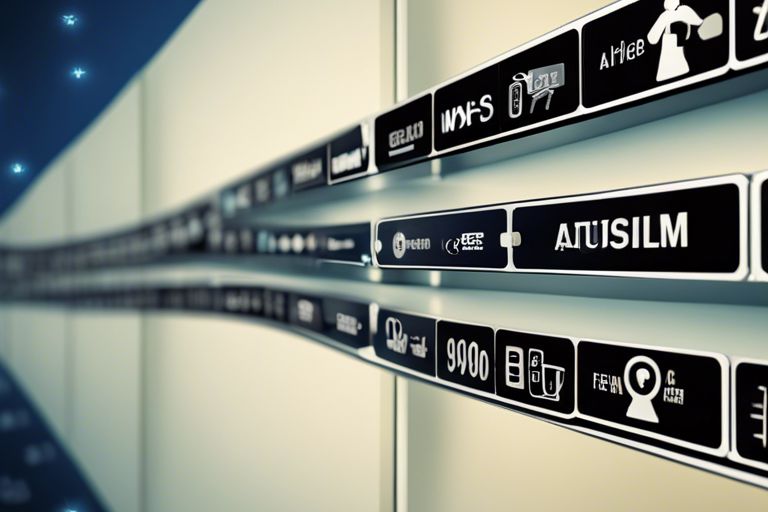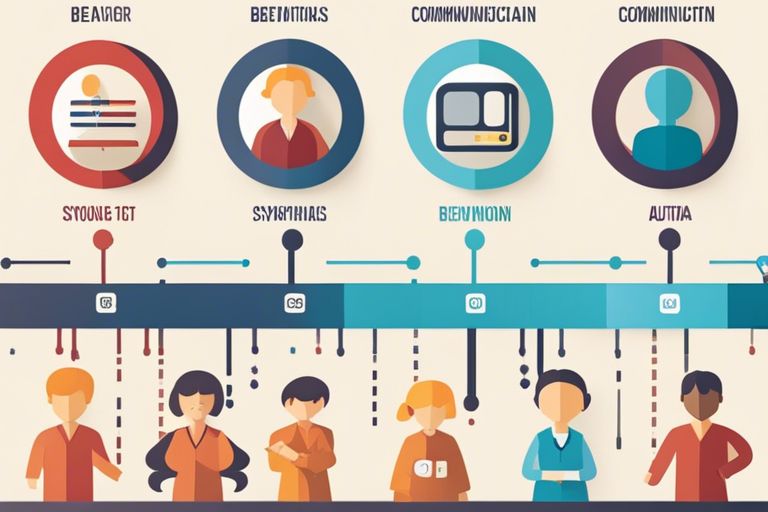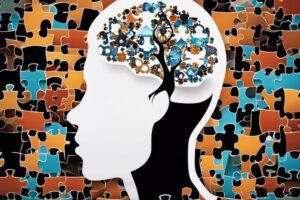Autism is a complex neurological disorder that affects communication, behaviour, and social interaction. Understanding the early signs and symptoms of autism is crucial for early intervention and support. Autism typically develops in early childhood, with most children showing symptoms by the age of 2 or 3. However, signs can be detected as early as 18 months. It is important to recognise these signs and seek professional evaluation and diagnosis. The CDC provides valuable information on What is Autism Spectrum Disorder? | CDC, which can help individuals understand and support those with autism.
Key Takeaways:
- Autism typically develops early: Signs of autism can often be detected in children as young as 18 months old, making early detection crucial for intervention and support.
- Early signs may include: Delayed speech and language development, repetitive behaviours, difficulties with social interaction, and sensory sensitivities are common early indicators of autism.
- Early intervention is key: Identifying autism early and starting intervention programmes such as speech therapy, behavioural therapy, and social skills training can greatly improve outcomes for children with autism.

The Development of Autism
When Does Autism Develop? Understanding Early Signs and Symptoms
Genetic and Environmental Factors
Genetic and environmental factors play a significant role in the development of autism. Research suggests that individuals with a family history of autism are at a higher risk of developing the condition themselves. Additionally, environmental factors such as prenatal exposure to certain substances or complications during birth can also increase the likelihood of autism.
- Genetic and environmental factors contribute to the development of autism.
- Family history and prenatal exposures can increase the risk of autism.
- Complications during birth may also play a role in the development of autism.
Knowing the role of genetic and environmental factors can help researchers and healthcare providers identify potential risk factors and develop early intervention strategies.
The Spectrum of Autism Disorders
The Spectrum of Autism Disorders encompasses a range of conditions that are characterised by challenges with social skills, repetitive behaviours, and communication difficulties. This spectrum includes autistic disorder, Asperger’s syndrome, and pervasive developmental disorder-not otherwise specified (PDD-NOS). Each individual with autism presents with a unique combination of symptoms and severity, highlighting the diverse nature of the spectrum.
Individuals with autism spectrum disorders may excel in certain areas such as art, music, or mathematics, showcasing their unique strengths and abilities. Early detection and support are crucial in helping individuals with autism reach their full potential and lead fulfilling lives.
Early Signs and Symptoms
When it comes to understanding autism, recognising the early signs and symptoms is crucial. Early detection and intervention can greatly improve the outcomes for individuals with autism spectrum disorder (ASD). By being aware of the red flags to look out for, parents and caregivers can seek help and support as soon as possible.
Social Communication and Interaction
In young children, difficulties with social communication and interaction can be one of the first signs of autism. Children may struggle with making eye contact, responding to their name, or showing interest in others. They may also find it challenging to engage in back-and-forth conversations or understand non-verbal cues, such as facial expressions or body language.
Furthermore, individuals with autism may have difficulty forming and maintaining friendships. They may prefer to play alone and have a limited interest in sharing their thoughts, feelings, or experiences with others. These social challenges can significantly impact a child’s development and quality of life.
Repetitive Behaviours and Limited Interests
Another common early sign of autism is the presence of repetitive behaviours and limited interests. Children with autism may engage in repetitive movements, such as hand-flapping, rocking, or spinning objects. They may also show a strong preference for routine and become distressed by changes in their environment or daily schedule.
Moreover, individuals with autism often develop intense interests in specific topics or activities. They may spend hours focused on a particular subject, such as trains, numbers, or maps. While these intense interests can be a strength for some individuals, they can also interfere with social interactions and daily functioning if not managed appropriately.

Diagnosis and Assessment
Screening Tools and Diagnostic Criteria
Diagnosing autism involves the use of screening tools and diagnostic criteria to identify the presence of the condition. One commonly used tool is the Autism Diagnostic Observation Schedule (ADOS), which involves observing and interacting with the individual to assess their social communication skills and behaviours. Additionally, the Diagnostic and Statistical Manual of Mental Disorders (DSM-5) sets out the criteria used by healthcare professionals to diagnose autism.
Healthcare professionals use a combination of screening tools and diagnostic criteria to evaluate an individual’s behaviour, development, and communication skills. By using these tools effectively, clinicians can make accurate assessments and provide appropriate support and interventions for individuals with autism.
Age of Onset and Recognizing Symptoms
Autism symptoms can be recognised early in childhood, typically by the age of 2-3 years. These symptoms may include difficulties in social interaction, communication challenges, repetitive behaviours, and sensory sensitivities. It is crucial for parents, caregivers, and healthcare professionals to be aware of these early signs and seek assessment and support as soon as concerns arise.
It is important to note that while autism is typically diagnosed in early childhood, some individuals may not receive a diagnosis until later in life. This is why early recognition of symptoms and timely intervention are vital to improving outcomes for individuals with autism.

Interventions and Support
Early Intervention Strategies
Early intervention strategies play a crucial role in supporting children with autism spectrum disorder. Identifying and addressing developmental delays as early as possible can significantly improve the child’s long-term outcomes. Interventions may involve behavioural therapy, speech therapy, occupational therapy, and special education tailored to the individual’s needs.
Parent training and involvement in early intervention programmes are essential for fostering the child’s development and learning. Early interventions focus on enhancing communication skills, social interactions, and reducing repetitive behaviours, laying a strong foundation for future growth and progress.
Long-term Support for Individuals with Autism
Long-term support for individuals with autism is crucial to help them navigate various stages of life. Transition planning from school to adult services, vocational training, and independent living support are essential components of long-term care. A multidisciplinary approach involving psychologists, therapists, educators, and community support is often necessary to provide comprehensive support.
Individuals with autism may require ongoing support with daily living skills, social interactions, and employment opportunities to lead fulfilling lives. Providing a supportive environment that accommodates their unique needs and strengths is key to promoting independence and quality of life for individuals with autism.
When Does Autism Develop? Understanding Early Signs and Symptoms
It is crucial to recognise the early signs and symptoms of autism, as early intervention can greatly improve the quality of life for individuals with Autism Spectrum Disorder (ASD). Autism typically develops in the first few years of life, with symptoms becoming more noticeable as a child grows and interacts more with their environment. By understanding the early signs, such as delayed speech development, difficulties with social interactions, and repetitive behaviours, parents and caregivers can seek support and guidance from healthcare professionals. Identifying autism early can lead to tailored interventions and therapies that can help individuals with ASD reach their full potential and navigate the world around them more effectively. Early detection and intervention are key in supporting individuals with autism to lead fulfilling lives.
FAQ
Q: What is autism?
A: Autism is a neurodevelopmental disorder that affects how a person communicates, interacts with others, and experiences the world around them.
Q: When does autism develop?
A: Autism typically develops in the early stages of a child’s life, usually becoming apparent by the age of 3.
Q: What are the early signs of autism?
A: Early signs of autism can include a lack of social interaction, delayed speech development, repetitive behaviours, and difficulties with communication.
Q: How is autism diagnosed?
A: Autism is diagnosed through a comprehensive evaluation by healthcare professionals, including observations of the individual’s behaviour and developmental history.
Q: Can autism be treated?
A: While there is no cure for autism, early intervention and therapy can help individuals with autism learn and develop important skills to improve their quality of life.
Q: What are the challenges faced by individuals with autism?
A: Individuals with autism may face challenges in social interactions, communication, sensory sensitivities, and repetitive behaviours that can impact their daily lives.
Q: How can parents and caregivers support a child with autism?
A: Parents and caregivers can support a child with autism by providing a structured routine, offering clear communication, seeking early intervention services, and creating a supportive environment that meets the child’s individual needs.







